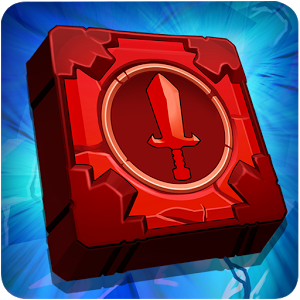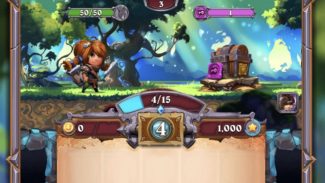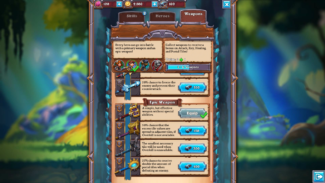Bastion
LQ: 9.15
Recommended Age: 10+
Skills Used: Planning, Working Memory, Mathematics, Reading

Tiles & Tales is a tile-based puzzle game with minor fantasy role-playing elements developed by Trilith Entertainment. The player begins with a game board and tiles placed randomly on the board. The goal is to match tiles in order to increase their value. Players use tiles to attack monsters, open chests, collect gold, and power up healing shrines and portals. As the player completes each level, they get to change characters, improve tile values, and purchase weapons. Parents should be aware that while Tiles & Tales is free to play, it does have in-game purchases available. Tiles & Tales does contain mild cartoon and fantasy violence and has a bit of a learning curve. We stand by the ESRB rating of E10+.
Tiles & Tales helps children practice and improve the following skills:
Adapting and adjusting to changing conditions and expectations.
 In order to play Tiles & Tales well, a player must exhibit cognitive flexibility. Each level is made up of a string of monsters, treasure chests, and healing shrines. These appear in varying order and the player can only see one item at a time. A player must be able to adapt to change, switching their strategy from collecting attack tiles the first round, for example, to collecting healing tiles the next round, followed by three rounds of increasingly tougher monsters that require higher and higher attack tile value. Not knowing what is coming next or how strong the monster or treasure chest will be forces the player to be ready to alter their strategy after every five moves (the length of a round). If they do not maintain this flexibility, they will face more attacks by the monsters, lower health point recovery at the healing shrines, and miss out on gold and treasure chests.
In order to play Tiles & Tales well, a player must exhibit cognitive flexibility. Each level is made up of a string of monsters, treasure chests, and healing shrines. These appear in varying order and the player can only see one item at a time. A player must be able to adapt to change, switching their strategy from collecting attack tiles the first round, for example, to collecting healing tiles the next round, followed by three rounds of increasingly tougher monsters that require higher and higher attack tile value. Not knowing what is coming next or how strong the monster or treasure chest will be forces the player to be ready to alter their strategy after every five moves (the length of a round). If they do not maintain this flexibility, they will face more attacks by the monsters, lower health point recovery at the healing shrines, and miss out on gold and treasure chests.
Developing a systematic approach for setting and achieving goals.
 In Tiles & Tales, the success of the player relies heavily on their ability to plan. Before the first move the player has to consider which tiles they need to collect (monster, healing, or key tiles) and how high the value for that tile needs to be in order to successfully "attack" (monsters have health points, treasure chests require a certain number of keys, and the higher the healing tile value is, the more health points the player's character will receive). The player also has to consider which tiles are on the board and which way to move them to achieve the desired result. While the player may have only one tile they are trying to merge (to raise the value), all tiles will move in the chosen direction and they will move as far in that direction as possible. This requires the player to take all tiles into consideration as they are planning.
In Tiles & Tales, the success of the player relies heavily on their ability to plan. Before the first move the player has to consider which tiles they need to collect (monster, healing, or key tiles) and how high the value for that tile needs to be in order to successfully "attack" (monsters have health points, treasure chests require a certain number of keys, and the higher the healing tile value is, the more health points the player's character will receive). The player also has to consider which tiles are on the board and which way to move them to achieve the desired result. While the player may have only one tile they are trying to merge (to raise the value), all tiles will move in the chosen direction and they will move as far in that direction as possible. This requires the player to take all tiles into consideration as they are planning.
After each move, more tiles appear on the board, and the player is only allowed five moves per round before the monster gets a chance to attack. Choosing which skills to level up with the gold earned in the game, which character to use, when and how to use special tiles, and (later in the game) whether to continue on to play the next level (therefore saving the player's current game board and tiles) or returning to the map first (therefore starting with a fresh game board and tiles in the next level), all require significant planning ahead of time to continue to successfully advance to the next level. If a player acts on a whim, they face defeat by the monsters, and risk being unable to open treasure chests. Eventually, they will lose all their hit points and have to start the level over again.
All membership plans come with full access to our entire suite of tools learning guides, and resources. Here are a few of the ones we think you’ll like the most: